I recently took some time out with the family in my house in Longueira, in the Alentejo coast. During a couple of weeks, we relaxed in the beaches of the region (Almograve, Odeceixe, and Arrifana), enjoying the sun and the ocean. Granted, August is not my favorite month to spend time there, due to the crowds of vacationers that arrive during the summer season. Still, the beauty and pristine character of these beaches and the isolated interior hills, remain relatively unaffected by the many visitors.
Of course I had to make some time for my photography, walking along some of the coastal paths, and visiting the numerous secluded small bays and inlets, where hardly anybody goes. On one of such occasions, I decided to walk the couple of km between Almograve beach and the small fishing harbor of Lapa de Pombas. Within such a small distance, there is an amazing variety of isolated beaches, most of them framed by the rocky cliffs and covered with pebbles. I like to visit during low tide in the late afternoon, close to sunset time. This gives me about 2 hours of photography when the interesting light is falling on the colorful and folded rock formations.
I usually do not write much about gear, but this is a good opportunity to mention one of my favorite lenses, the Fujinon 14mm f/2.8. This wide angle lens is essential to me, because I find it ideal for my photography, including the seascapes of this area. So, all the photos that follow were made with this lens. The weather was overcast, with some fog banks coming and going, which can be both positive and negative. It is positive, because the fog acts like a giant light diffuser, softening the light that falls over the cliffs and the sea; but is also negative, because it results in bland and uninteresting skies. As such, in most of the photos I have chosen to exclude the sky. I have also used a 10 stop neutral density filter to add an extra dimension of softness to the water, which complements nicely the overall mood of this quiet afternoon stroll.
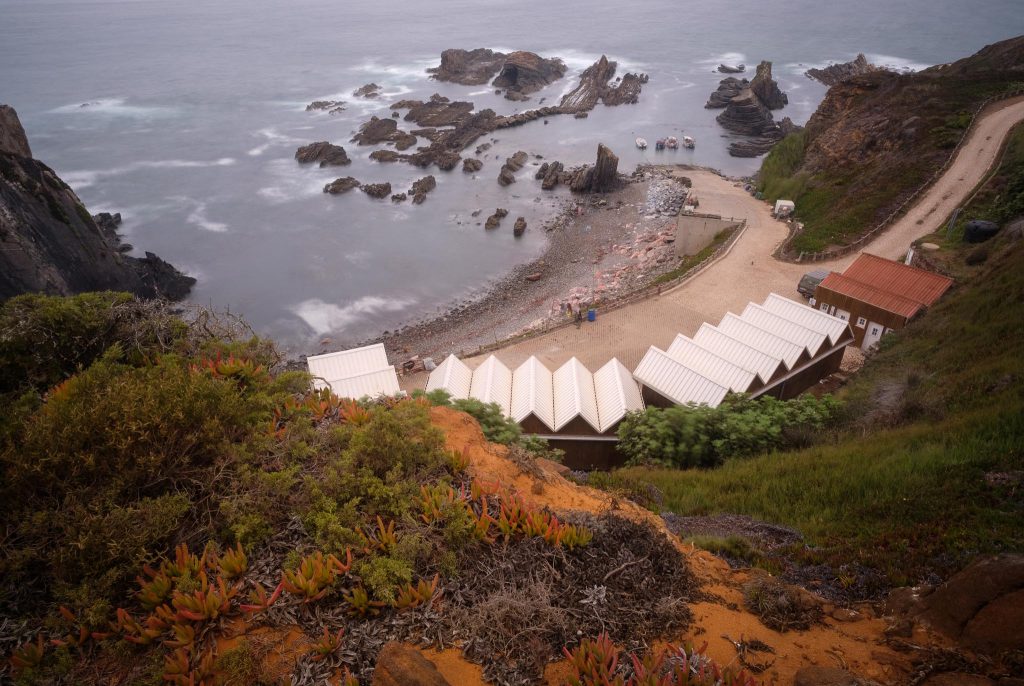
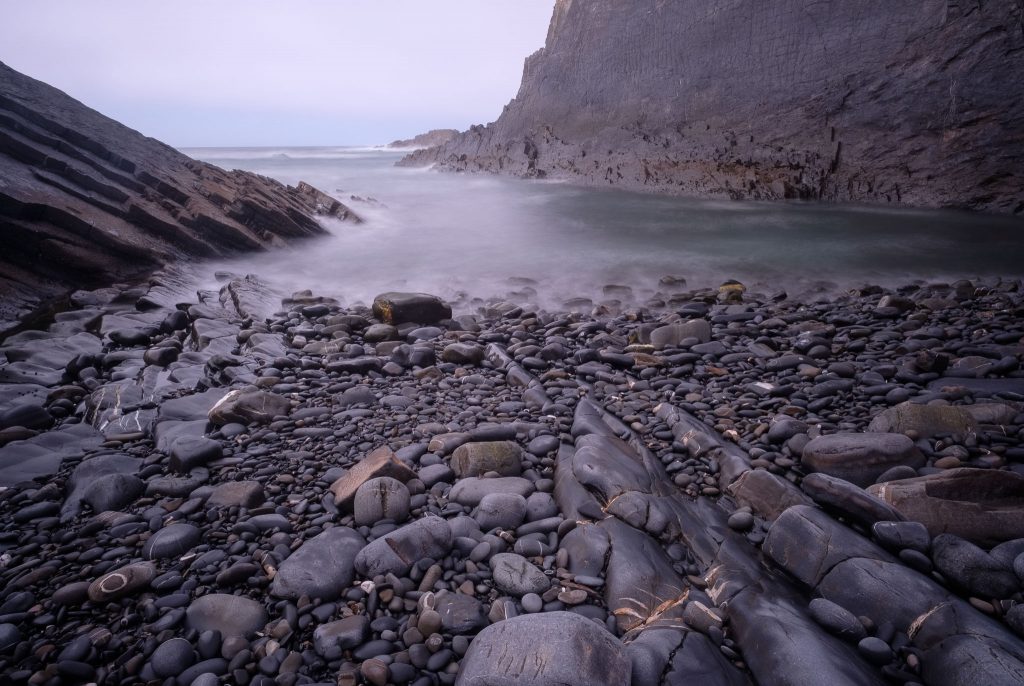
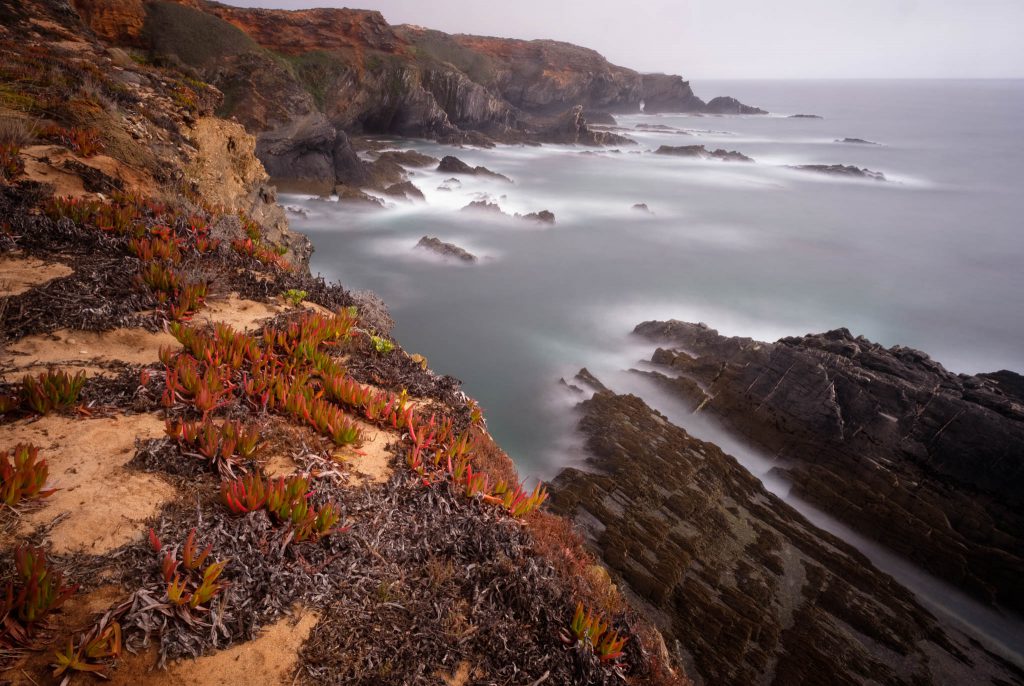
During low tide, it is possible to walk down from the top of the cliffs to the beaches, where there are many tidal pools, eroded rock formations, and folded geologic layers. A few minutes before sunset, the fog lifted for a while, and a warm light descended over the area, adding an almost otherworldly dimension to these scenes.
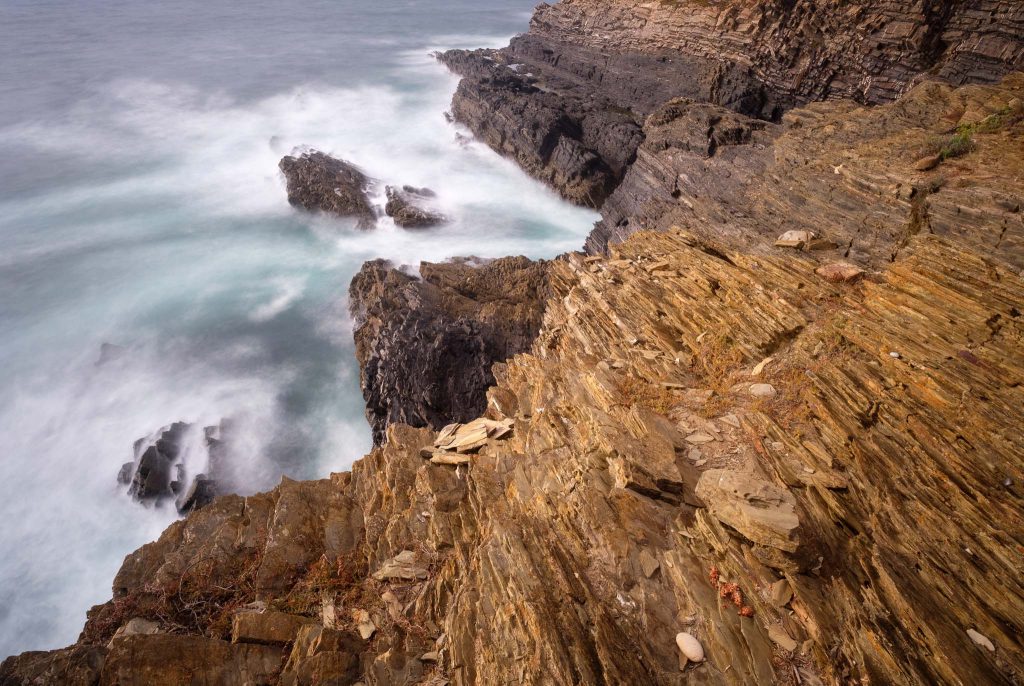
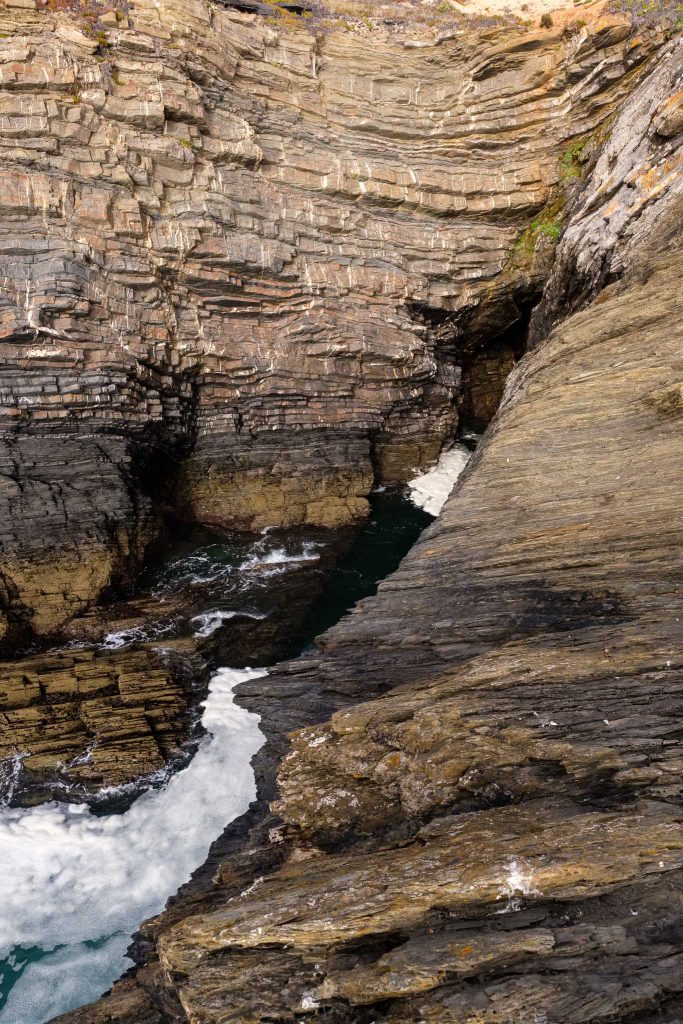

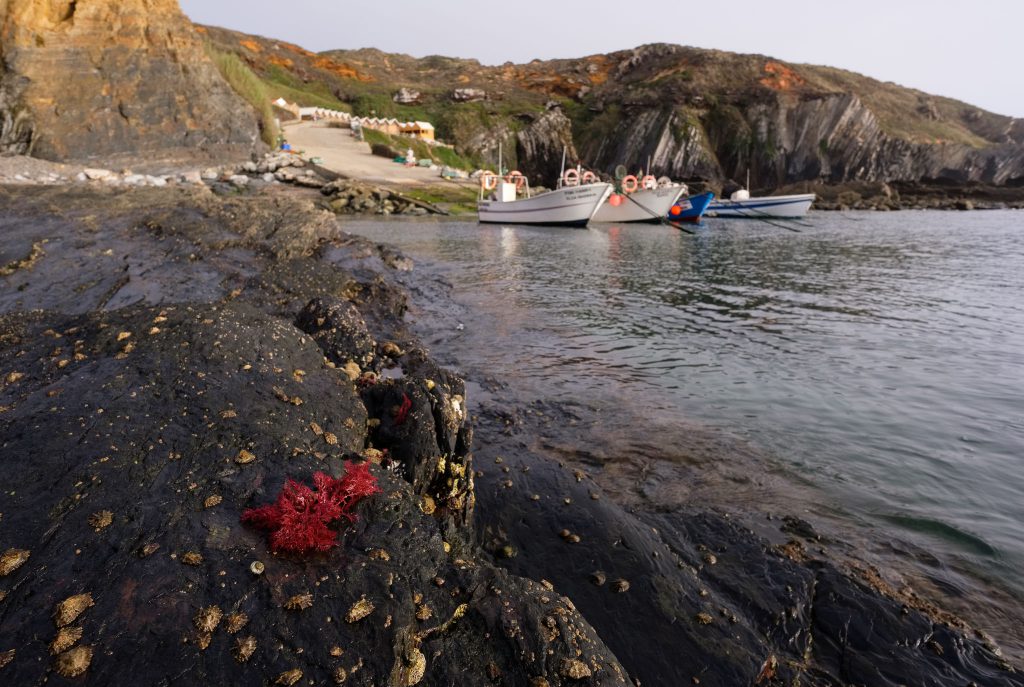
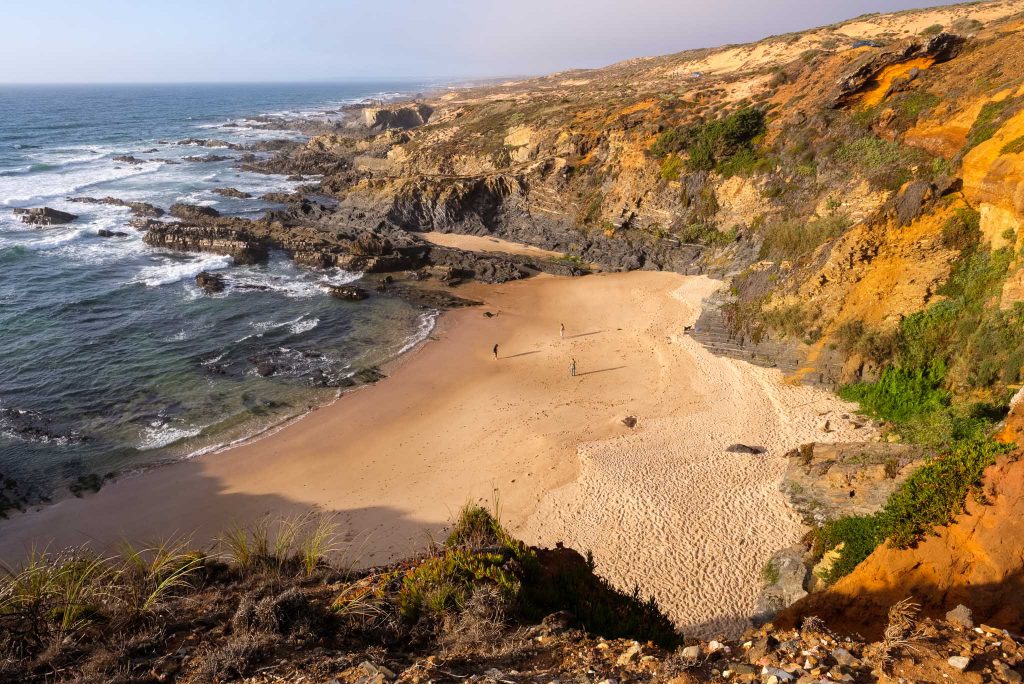

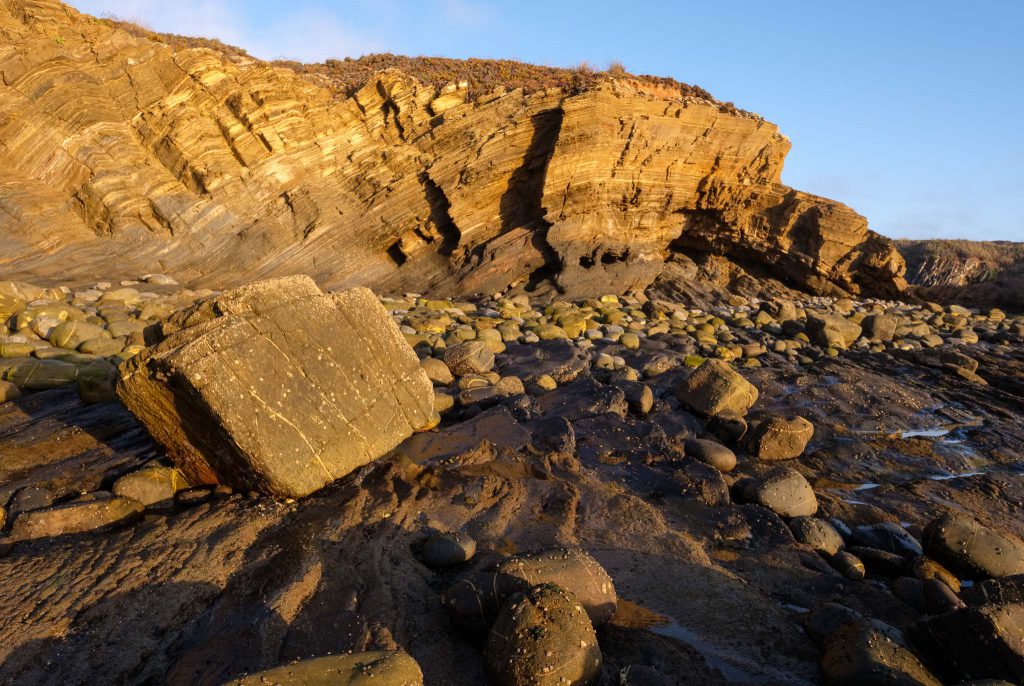
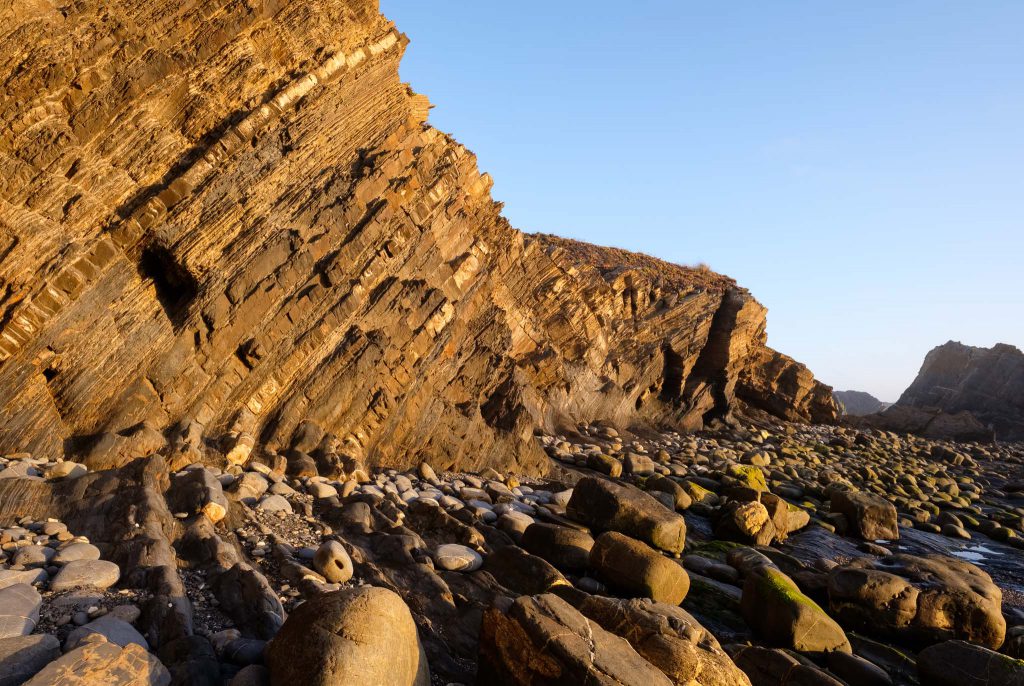
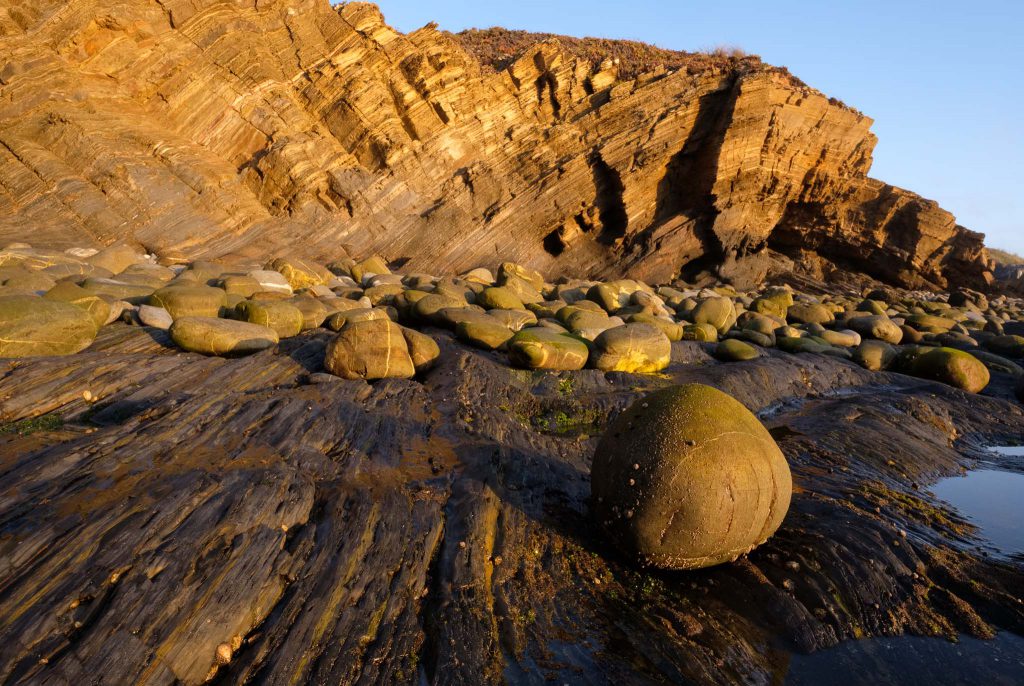
While walking around in these beaches, it is important to be careful, because the smooth rock surfaces are sometimes slippery due to an algal cover. Plus, pay attention to avoid twisting an ankle while walking over the pebbles. Other than that, if you visit these places, you will have a wonderful time. I know I did.